Design students discovers one of the top cultural hotspots in Europe on a week-long study trip
Berlin, the capital and the largest city of Germany, is well known for its creative industry, festivals, diverse architecture, contemporary arts, nightlife and high quality of living. The city is also home to world renowned universities, museums, entertainment venues, orchestra and host to many sporting events. In October, a group of 29 students from The Design School at Taylor’s University embarked on a trip to the vibrant city for Activity Week - aimed to immerse themselves with the artistry and charm of its traditional and modern art forms and design works.
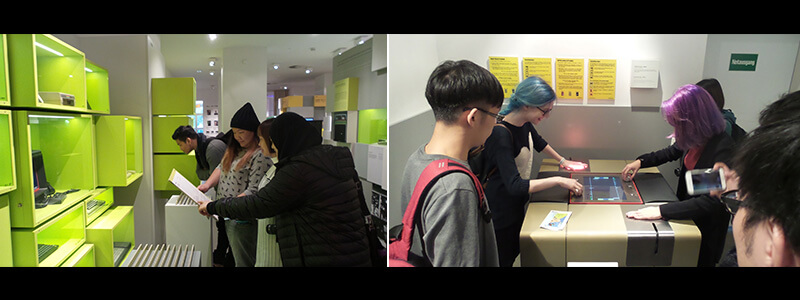
Students from The Design School at Taylor’s visit their first museum, Computerspielemuseum Berlin, an interactive computer museum displaying the history of games and computers
Led by Programme Directors Mohd Asrizal Razali and Yip Jinchi, the 8-day trip was a yearly experiential-immersive learning approach complementing theories learned in the classroom. It also focused on enriching the students’ experience in a foreign culture filled with a vast arts and design elements through visiting museums, galleries, art markets and a live performance.
“We wanted the students to explore options in the creative scene in various platforms like print, digital, paintings and sculptures to gain a wider perspective when it came to design,” said Asrizal. “I believe the exposure has given them a wider perspective – where they recognised the opportunity to dive into the past, discuss the present and anticipate the future trends in this industry.”
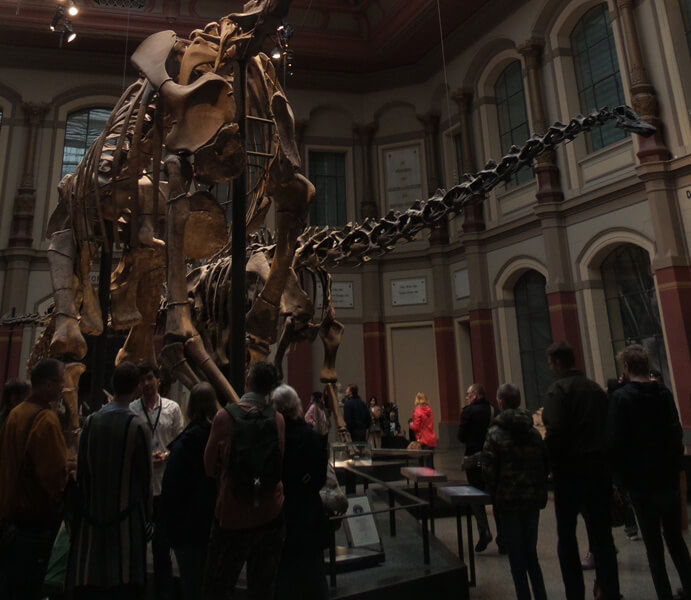
The Museum für Naturkunde or the Museum of Natural History is famous for the largest mounted dinosaur in the world and houses more than 30 million specimens
The group of students visited a host of Berlin’s popular museums including the DDR Museum – Berlin’s most interactive museum which focused on the everyday life in the former East Germany; Museum for Communication – an illustration of the past, present and future perspectives of transmitting and receiving information; Museum for Computer Games – contains over 300 exhibits including rare originals and playable classic games like Pong-Machine, Nimrod and PainStation; Natural History Museum – filled with an impressive collection of fossils, artefacts and dinosaur skeletons; and the Salvador Dali Museum. Following which, they explored Berlin’s weekend art markets, attended a live performance called THE ONE Grand Show and topped it with a two-day workshop with Bauhaus-Archiv Museum titled, “Symphony of the City: Composition with Light and Sounds”.
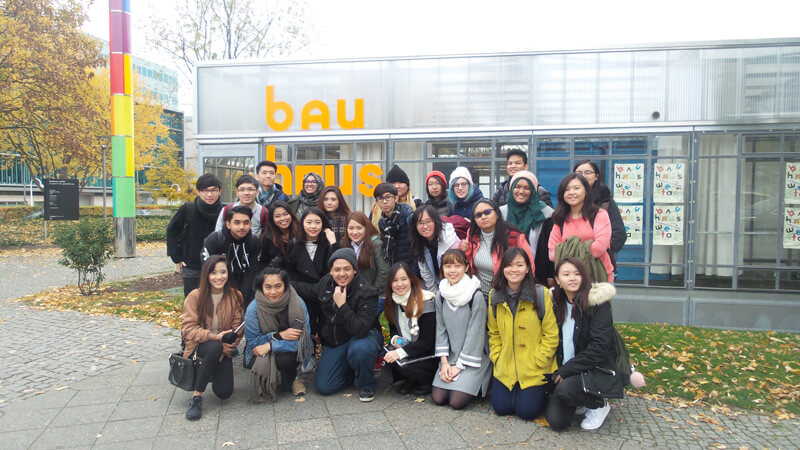
A photo opportunity in front of Bauhaus-Archiv before the workshop begins
The Bauhaus-Archiv presents the history and influence of the Bauhaus, the 20th century’s most important college of architecture, design and art – and over the course of the decades, it has built up the world’s largest collection of materials on the subject. Accordingly, the Bauhaus-Archiv Berlin presents not only thematic exhibitions on the Bauhaus, but also regular exhibitions of contemporary design from the creative community.
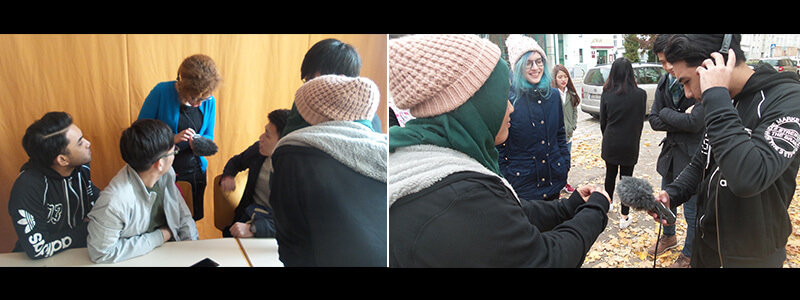
Zara Morris (middle), freelance Art Educator, shows students how to use a portable audio recorder to collect sounds to complement their 3D shapes
The workshop conducted by Nils Hauer, Architect & Museum Guide, Centre for Culture for the Public and Zara Morris, freelance Art Educator, was held at the museum on the first day, followed by a lab session nearby on the second day. The session focused on works of photography by László Moholy-Nagy – a multifaceted artist, educator, and prolific writer, known for his experiments with camera-less photographs, which he called “photograms”. During the session in the photo lab the students were introduced to photographic techniques without a camera and invited to experiment.
According to third year student in Bachelor of Arts (Honours) Graphic Communication Design, Shakirah Idora Jangir, “I am excited to be a part of this trip, especially looked forward to the workshop with Bauhaus-Archiv. The facilitators encouraged us to explore our ideas, design and make it come to life with sounds, pictures and video with anything that came to mind.”
The students were encouraged to explore and form 3D design in shapes, collect sounds with a portable audio recorder, experiment with photograms and create a video montage of their finished works. “It’s impressive how much was achieved in a short period of time,” commented Zara, “The students came with an open mind and made full use of the facilities provided.”
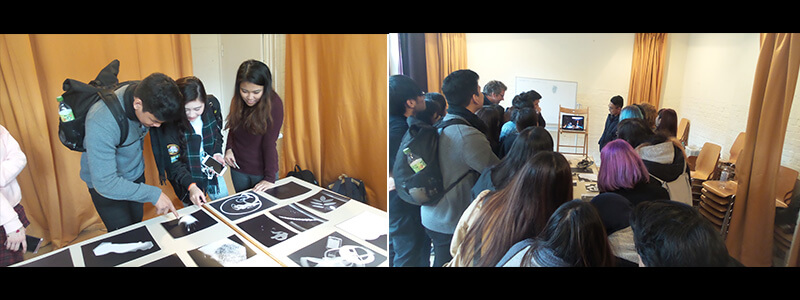
Students look at the final works of their peers and a video montage of their 3D shapes, photograms accompanied by the sounds collected in one final piece
“We approached the programme with an open structure and no specific outcomes. We wanted their creativity to flow and have the image in their head translate into life,” Nils added. “It was an exciting experience for me – I was amazed at how concentrated the group became in a short period of time.”
For Nur Rahila Aleem Md. Razip, second year student pursuing the Bachelor of Arts (Honours) Interactive Multimedia Design, “Art is subjective and being able to observe and interpret different themes based on social and cultural influences in wide time periods was an eye opening experience. I kept looking back at last year’s Activity Week in Japan, the heart of anime culture, where we saw fantastic works and expressions from prominent artists. Though they took on different platforms from canvas to computer, I was able to pick up on some similarities in the content and prolific works due to minimal censorship and maximum expression.”
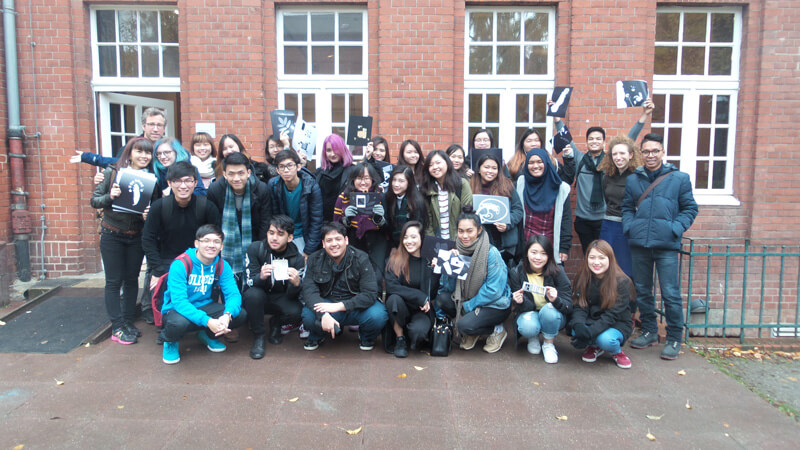
A group snapshot displaying students’ individual works on the second day of the workshop at Bauhaus-Archiv, Berlin, Germany
Foundation in Design student, Muhammad Ali Husaini Muhammad Amin, sang the same tune, “My perception and interpretation of any form of art has definitely changed. There are more to consider than what meets the eye and the appreciation of history, architecture and importance of preservation brings value to the arts scene. There are many artists here, in the city, and all of them are celebrated in some way.”
Post study trip in Berlin, Asrizal and Jinchi look to have students archive their experiences in all possible platforms - capturing the visual, sound, thoughts and feelings in a publication as a future reference for their classmates and prospect students considering Activity Week.
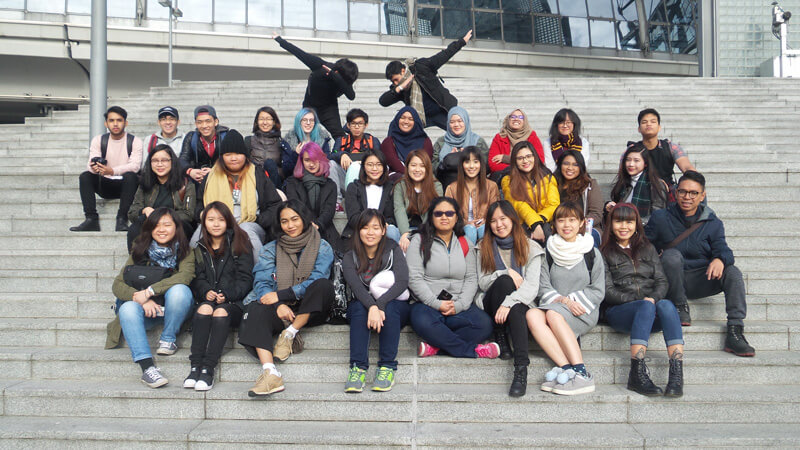
Students and lecturers of The Design School at Taylor’s University gather for a final shot in front of Berlin Hauptbahnhof, the main railway station in Berlin, Germany before the long trip home